Interior design is not only a way to create a comfortable space to live in, but also a reflection of the times. In the last 5-10 years, new styles have emerged in response to global changes (e.g. pandemic or increased interest in self-expression through space). These styles are not only visually appealing, but also functional: they create a unique space where people can feel most comfortable and inspired.
1. Biophilic style
Biophilic interior design takes its name from the term "biophilia" introduced by American biologist Edward Wilson. He argued that humans have an innate attraction to nature and named this attraction with this term. With global urbanization and constant stress, this idea has become particularly relevant, especially in recent years with the pandemic. The biophilic style has grown rapidly since the mid-2010s, but the real peak of popularity came during the coronavirus period, when many people were forced to spend more time at home, away from the outdoors and nature.
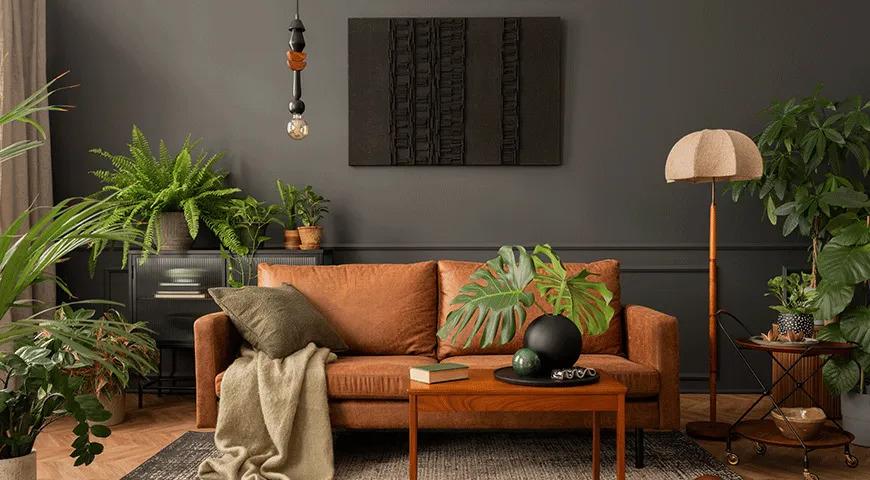
The main goal of biophilic design is to integrate natural elements into the interior to create a space that has a positive effect on a person's psychological state. Natural materials such as wood, stone, linen, wool become the basis for the design of rooms. An important aspect of this style is the use of a large number of plants, and not just the usual indoor flowers. Vertical gardens, moss walls, compositions of succulents or even small conservatories in the house become key elements.
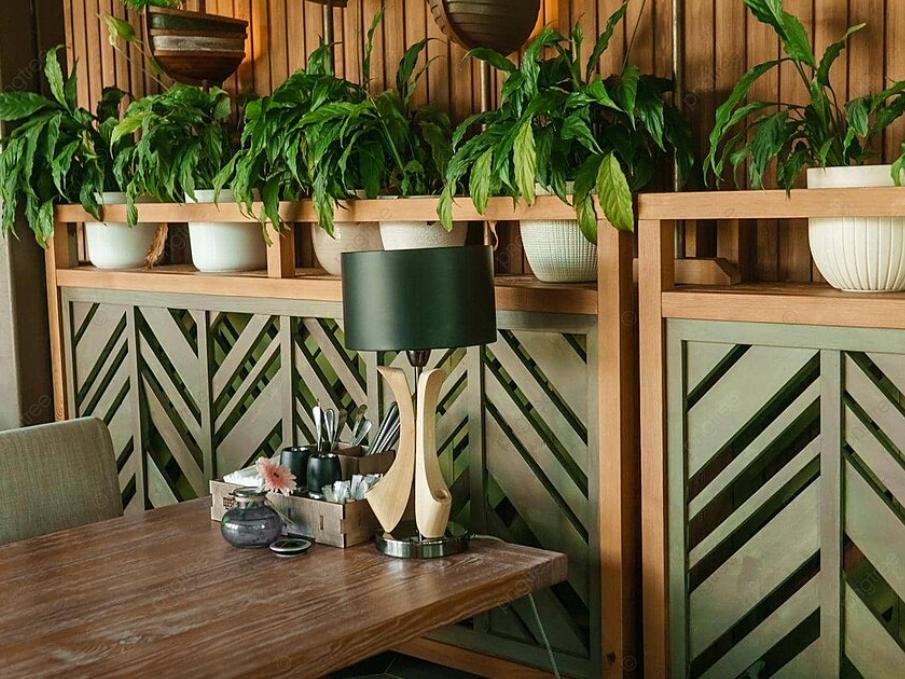
Biophilic style means not only decorating the space, but also creating conditions for harmonious coexistence with nature. In such an interior there is a lot of natural light: large windows, glass doors, light tunnels, transparent roofs. Sunlight enters the house, creating a feeling of openness and spaciousness. The combination of daylight and artificial light helps to maintain the natural biorhythms of all living things in the house.
Tip: For Cyprus, the biophilic style may become very popular as the island has all the climatic conditions for its easy implementation.
The color palette of the biophilic style is based on natural tones: greens, sand, browns and terracotta. The interior creates a feeling of calm and comfort, reminiscent of wild (in the sense of untouched) nature. Designers actively use natural textures - raw wood, stone with its natural irregularities, roughness of concrete or ceramics.
The secret of the popularity of biophilic style lies in its ability to improve the quality of life. In the age of digitalization and urbanization, it is important for people to reconnect with nature. Homes decorated in this style make it easier to relax, reduce stress levels, and increase concentration and productivity. Biophilia not only enhances the visual perception of the interior, but also has a positive impact on physical and mental health.
2. Japandi
Japandi is a new trend in interior design that combines Japanese minimalism and Scandinavian cozy aesthetics ("japan" + "scandi"). This style emerged in 2017-2018, when designers began looking for ways to combine the best features of two cultures known for their simplicity and functionality. The style quickly gained popularity in the 2020s, especially against the backdrop of world changes due to the pandemic.
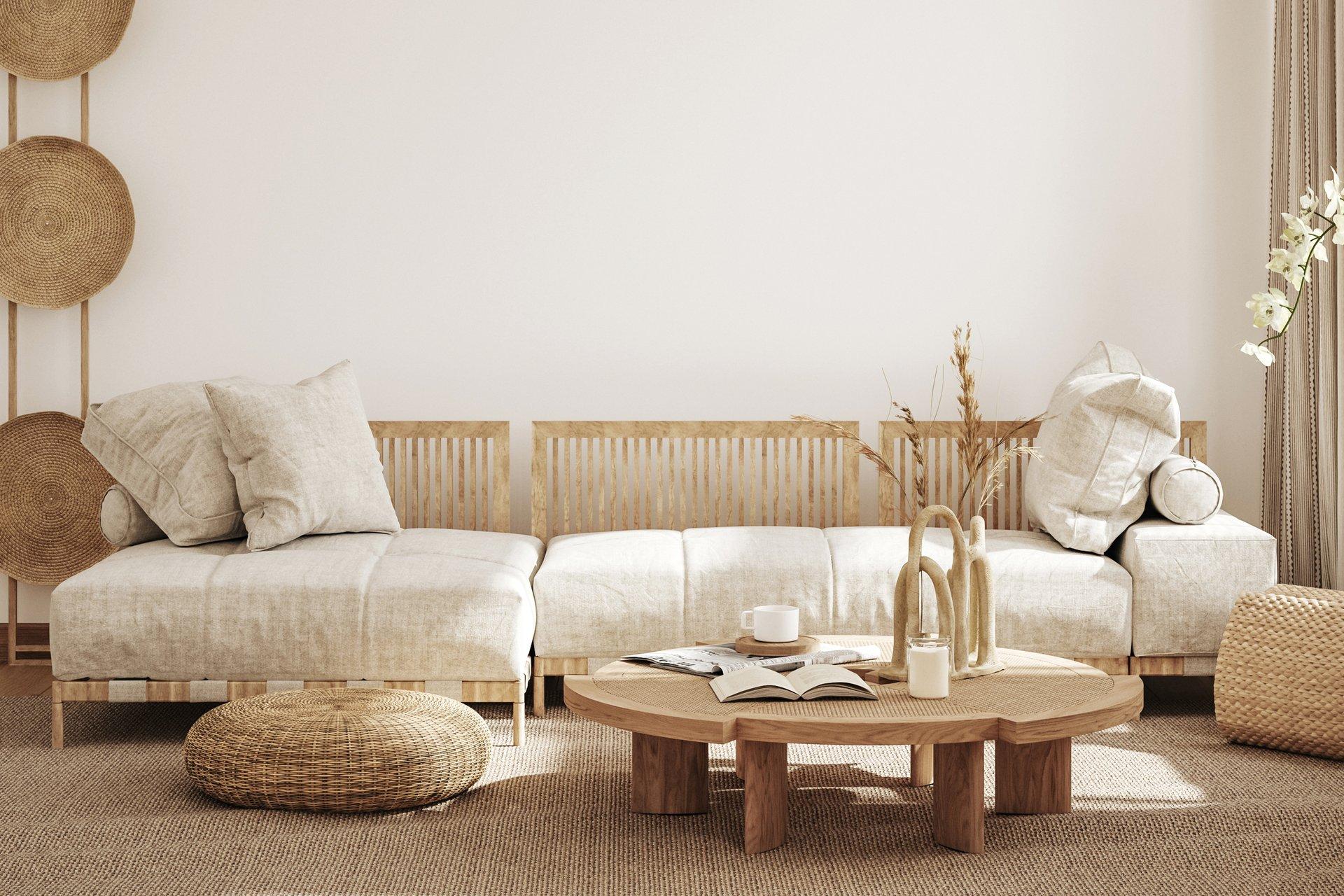
Japandi is based on the Japanese philosophy of wabi-sabi, which values imperfection and the natural flow of time. This approach is echoed in the Scandinavian concept of "hugge", which focuses on creating a cozy, warm and relaxing atmosphere. In Japanese interiors, simplicity, restraint and natural materials dominate. The color palette includes soft pastels - gray, beige, cream - and warm wood tones.
Furniture in this style is characterized by simple shapes, smooth lines and maximum functionality. It is important to avoid excesses: each object has its own purpose and practicality. For example, low wooden tables in the Japanese style are perfectly paired with simple Scandinavian chairs. The use of natural fabrics such as linen, cotton and wool creates a feeling of comfort and warmth. Floors are often made of light-colored wood, adding to the sense of space and light.
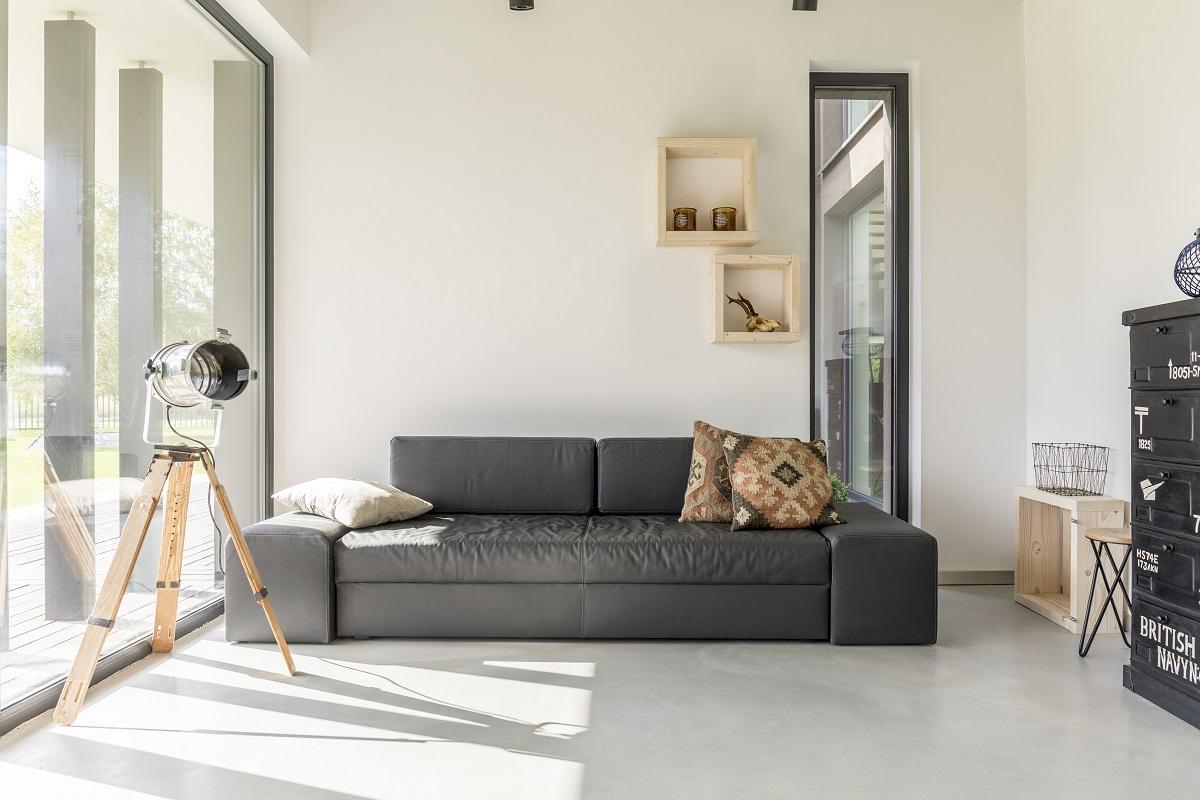
Japanese-style rooms remain minimalist, but not cold. It is important to find a balance between functionality and comfort. Decorative elements are kept to a minimum. Examples include handmade ceramic vases or simple but expressive paintings in neutral colors. Textiles and carpets often have a rough texture, adding warmth and a sense of "earthiness" to the room.
One of the brightest examples of Japandi can be found in the interiors of small Japanese homes, where every inch of space is used rationally, yet the rooms remain bright and cozy. This is an ideal style for those who appreciate order and clarity, but want to retain the warmth and coziness of home.
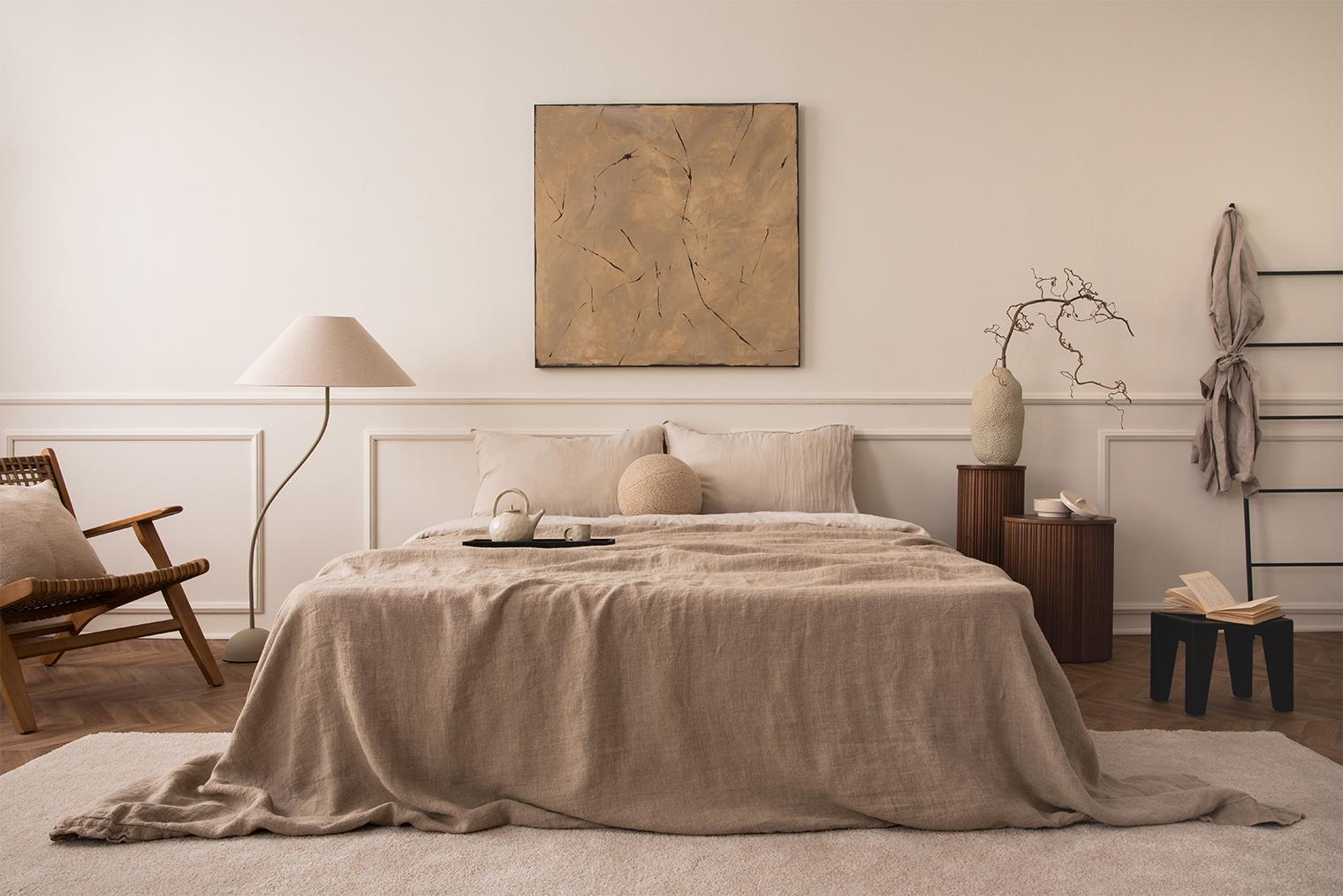
Japandi is ideal for small spaces as it allows the use of minimal furniture without sacrificing comfort. With pandemonium and remote working, Japandi has become a true oasis of calm and coziness for those who appreciate harmony and simplicity.
3. Maximalism
Maximalism as an interior style emerged as a counterpoint to minimalism, which dominated design for most of the 2010s. While minimalism advocated a rejection of excess and sought to simplify, maximalism was the epitome of boldness, brightness and eclecticism (mixing). This style gained popularity in the early 2020s as people became increasingly eager to express themselves through interiors and use details to create unique spaces.
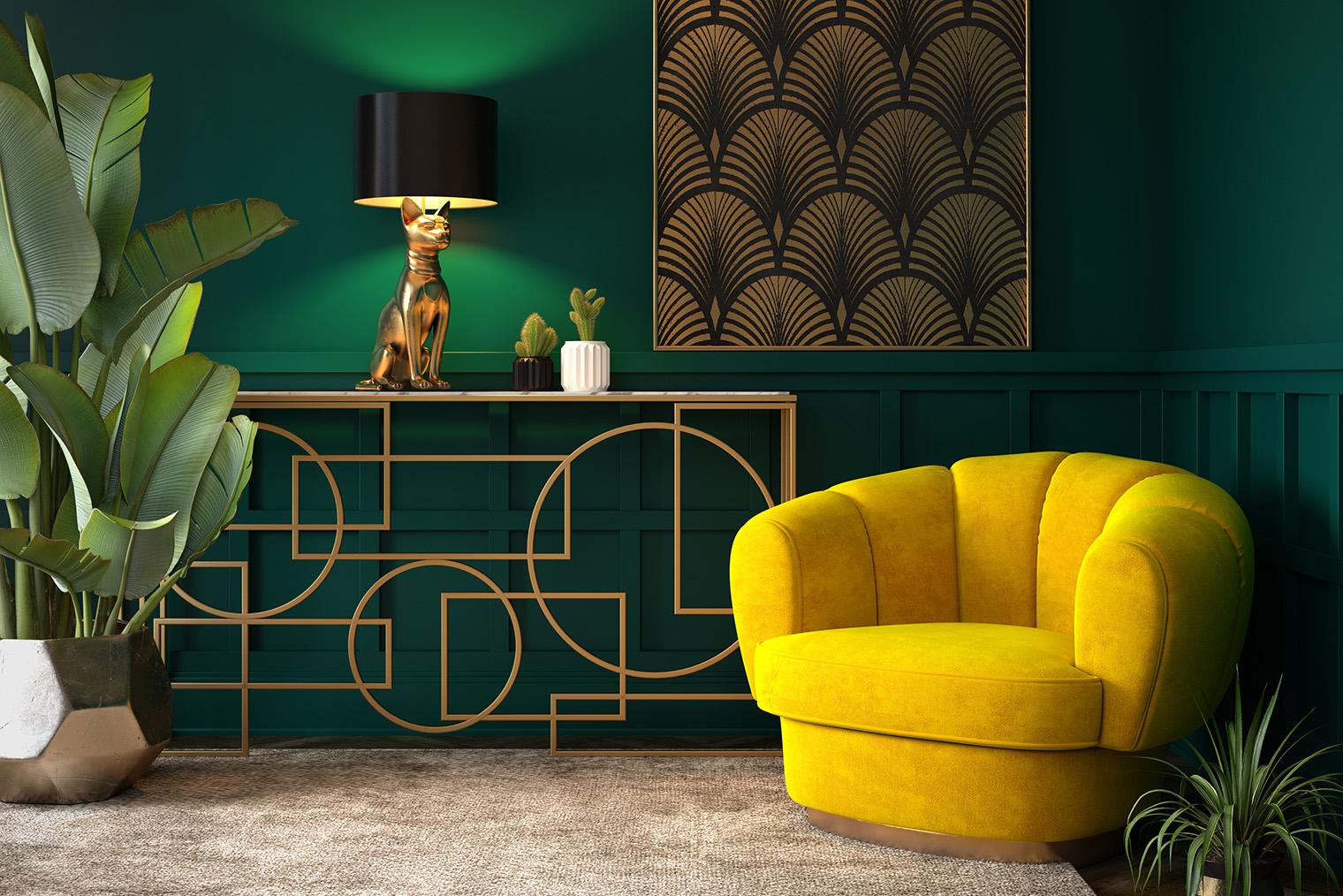
Maximalism is a kind of farewell to the "less is better" rule. This style welcomes abundance, bright colors and bold combinations. Maximalist interiors feature saturated hues - deep blues, reds, purples and greens - as well as a variety of patterns and textures. Wallpapers with large floral or geometric patterns are combined with eclectic furniture and unique decorative elements such as vintage mirrors, antique figurines or modern artwork.
In contrast to the strict and clean lines of minimalism, maximalism encourages the mixing of styles and eras. For example, an antique chest of drawers can be placed next to a modern art installation, and a classic sofa can be upholstered with a velvet fabric in a light color. The opposite of textures plays an important role: soft velvet cushions, heavy silk curtains, wooden floors and marble countertops create a rich palette of sensations.
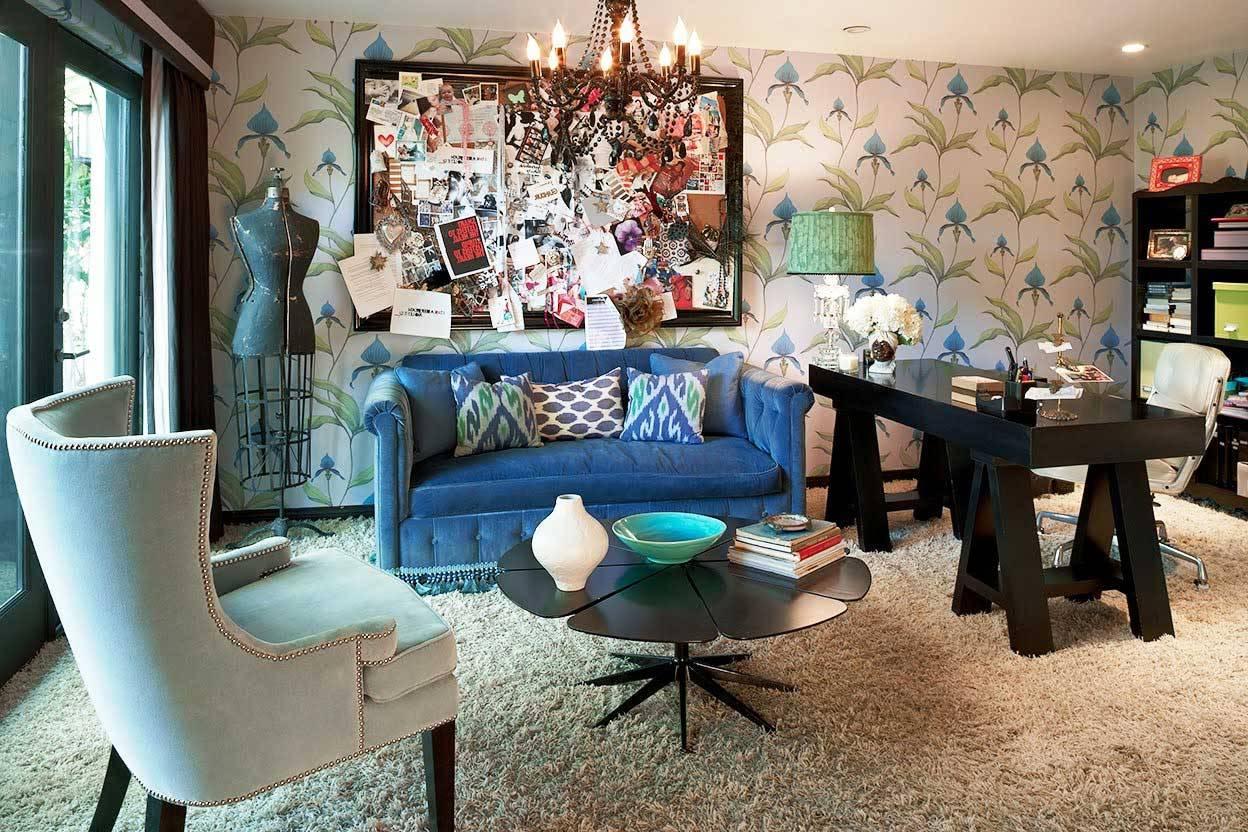
It is important to note that maximalism is not just a chaotic jumble of objects. On the contrary, behind the apparent randomness is a carefully considered composition in which each element complements the other. For example, a bright sofa in a boho-chic style can serve as the central element of the room, around which the rest of the composition is built.
Maximalism also allows you to experiment with art. Walls in such an interior are often decorated with paintings, photographs, mirrors and other decorative elements. Rooms decorated in this style become a kind of art gallery, where every corner tells its own story.
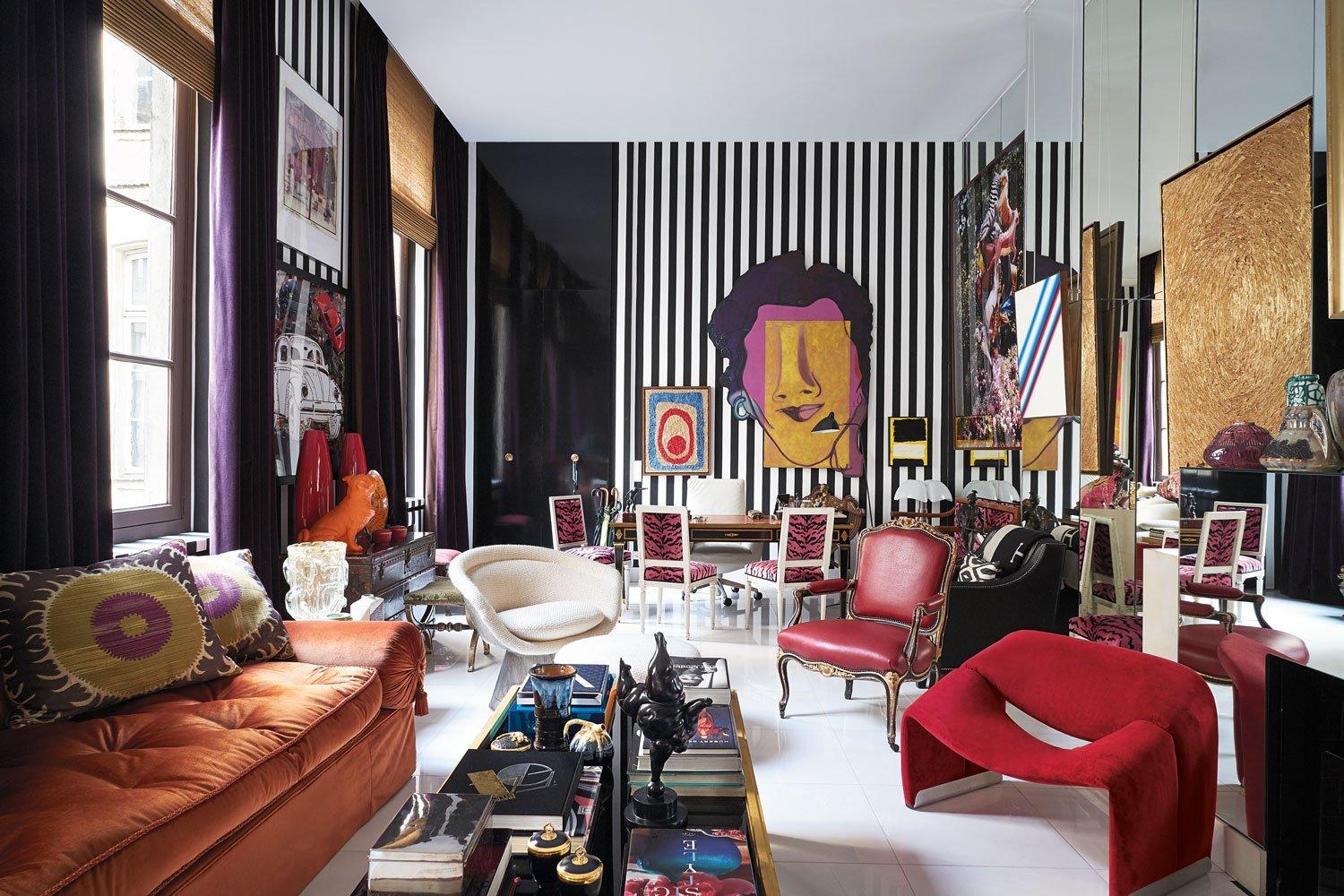
This style is especially popular among creative people who appreciate individuality and boldness in the design of their space.
4. Grunge Chic
Grunge chic is a style that has emerged in the last 5 years as an evolution of popular loft and industrial design, but with the addition of softer and cozier elements. The name "grunge" comes from the 1990s musical subculture of the same name, which was a protest against mainstream culture, but in interior design, grunge-chic has become the embodiment of anti-glamour and anti-perfection, but in a more ennobled and refined form.
Grunge-chic has gained popularity due to its bold approach to decoration: it combines carelessness and sophistication, roughness of materials and luxurious details. The interiors of this style feature unplastered brick walls, exposed concrete ceilings and metal structures, complemented by elegant furniture and spectacular decorative elements, creating a contrast between the concepts of "raw roughness" and "sophisticated chic".
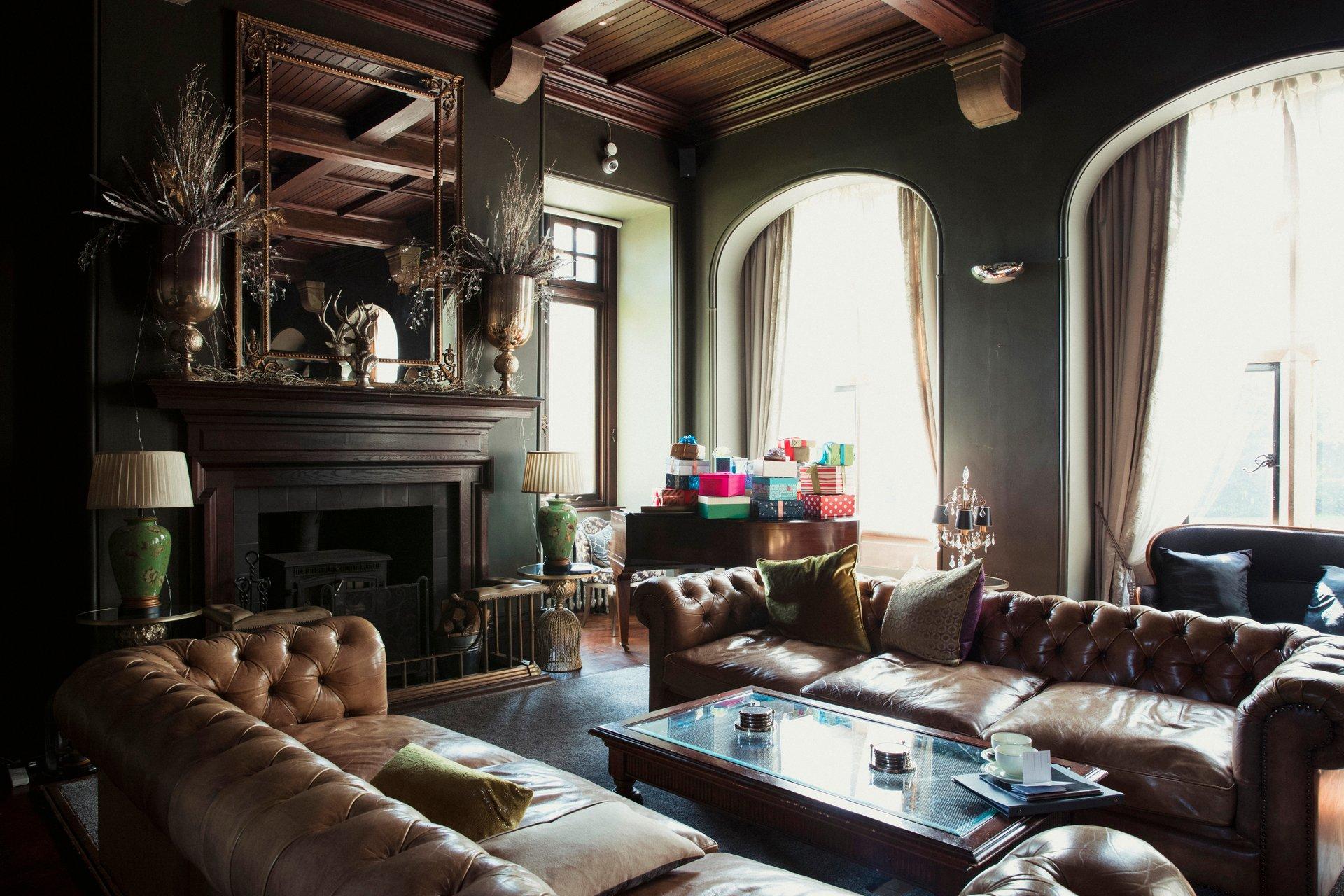
A key feature of grunge chic is the abundance of materials with "history": aged wood, worn leather chairs, patinated metals. These elements create a sense of time and life, which is especially important for those who appreciate the atmosphere of a space with character. Furniture and accessories can be intentionally shabby or intentionally rough, as if they have already come a long way. In a grunge-chic interior, these things are not perceived as outdated, but as full of history and meaning.
Grunge-chic interiors are often decorated with a neutral color palette of grays, whites, blacks and browns. But because of the textures and contrasts, the room does not feel boring or cold. On the contrary, it looks cozy and vibrant, as if saturated with the energy of the past. Heavy wooden tables, metal lamps with a vintage patina and velvet throw pillows create a complex but harmonious combination.
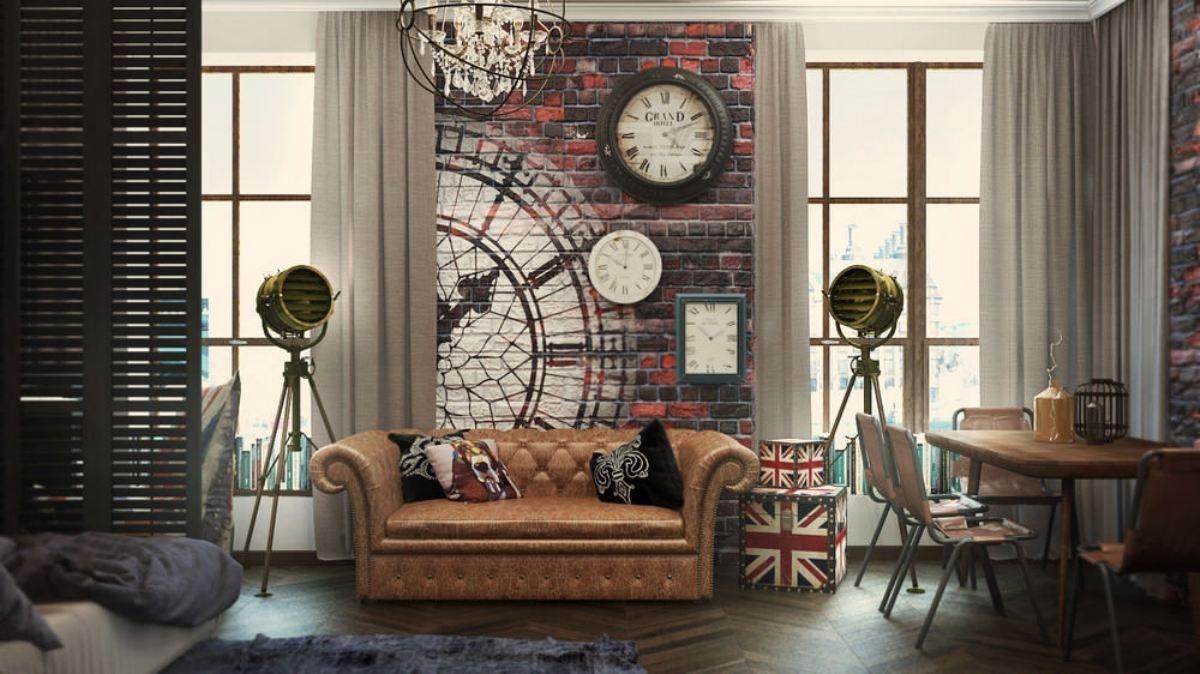
The popularity of grunge chic is due to the fact that it eschews the shiny perfection sometimes associated with other styles. Grunge appeals to people who are tired of sterile, overly calibrated interiors. It is suitable for those who want to add an element of unpredictability and comfort to their home. In a living room, for example, a rough brick wall can be paired with a luxurious crystal chandelier to add elegance and contrast.
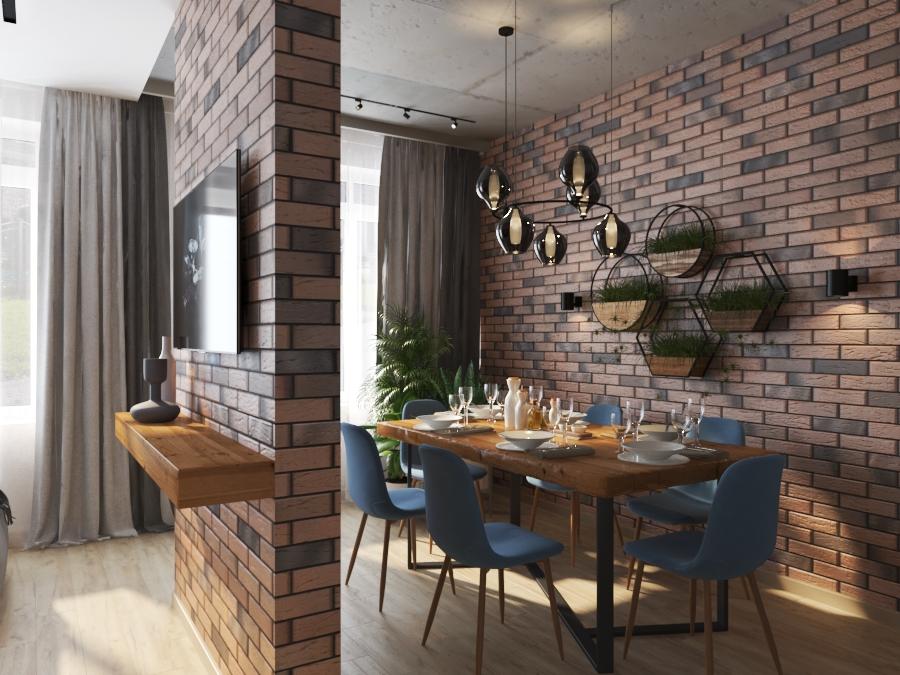
Interestingly, grunge chic has become popular not only with young people, but also with those who want to create a relaxed and sophisticated atmosphere. This style is for those who appreciate the freedom of self-expression, do not want to follow strict rules, but at the same time do not want to give up aesthetics. Classic examples of grunge-chic interiors can be found in modern lofts in New York or London, where urban roughness and retro elements are combined.
5. Neo-Memphis
Neo-Memphis is a style that emerged in response to a resurgence of interest in the iconic Memphis Group, founded in the 1980s by Italian designer Ettore Sottsass.
Interesting: The Memphis Group was a collective of Italian designers who emphasized the "cartoonishness" of their creations.
This style received a new lease on life in the 2020s, when the millennial and zoom generation began looking for ways to create bright, bold and playful interiors that reflected their desire to experiment and depart from traditional canons.
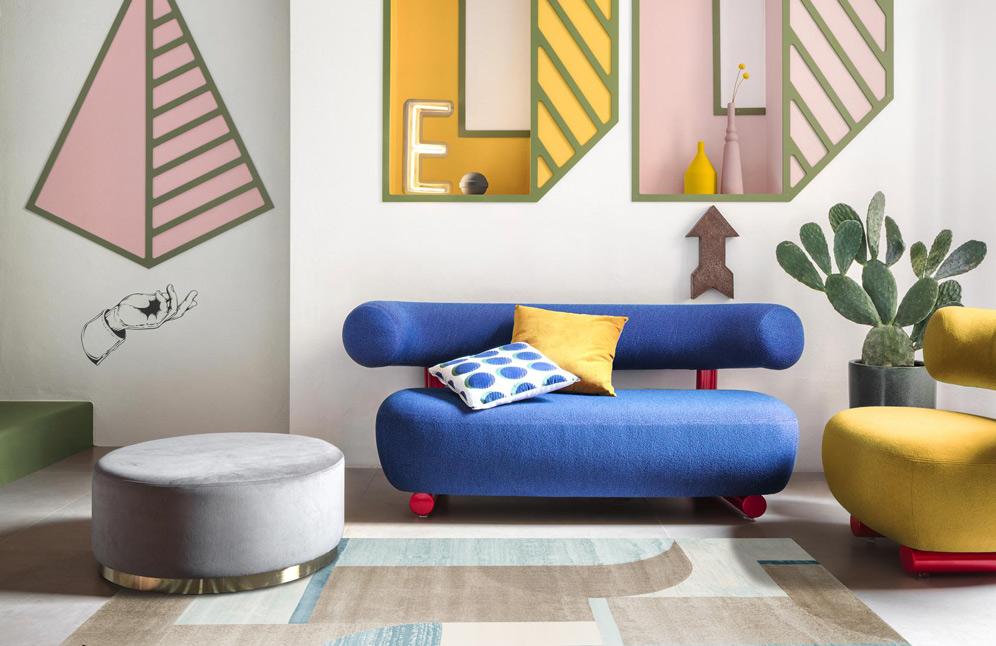
Neo-Memphis continues the traditions of the original Memphis, where bold shapes, bright colors, and bizarre material combinations reigned supreme. This style has become a symbol of rebellion against minimalism and strict rules. Neo-Memphis features bold geometric shapes: circles, triangles, squares, often in bright acid colors. The color palette includes saturated reds, pinks, blues and yellows that can be combined with black and white graphic patterns.
Neo-Memphis makes heavy use of plastic, metal and glass, creating a contrast between high-tech materials and vintage forms. Furniture and accessories in this style may resemble toys or art objects. For example, a sofa can be shaped like a wriggling snake, and a coffee table can be made in the shape of a giant jigsaw puzzle. All this adds playfulness and unpredictability to the interiors.
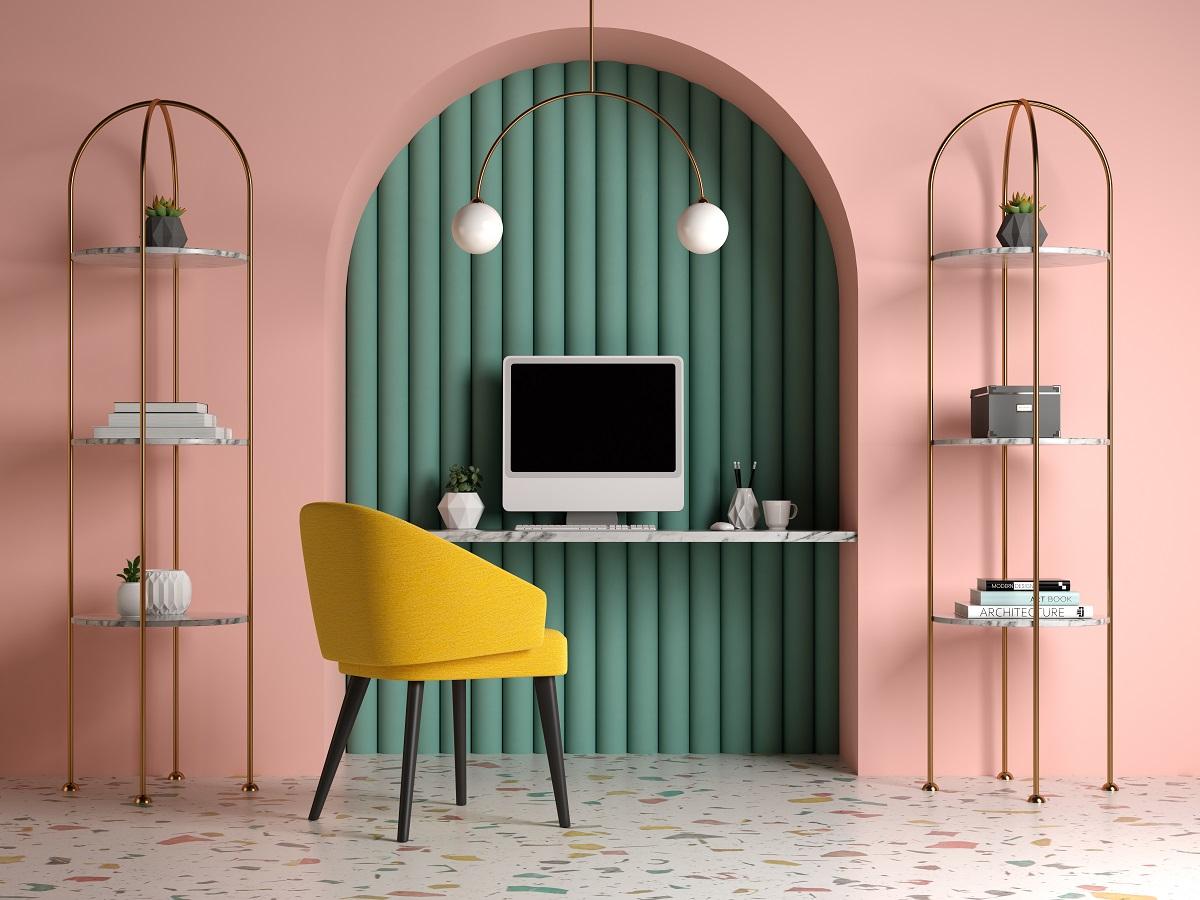
Unlike the original Memphis, the Neo-Memphis is more pragmatic and adapted to modern comfort needs. While in the 1980s this style was more an expression of protest and avant-garde, today its elements are used to add energy and visual dynamism to the space. Interiors decorated in Neo-Memphis style are ideal for modern urban apartments or studios of creative people.

Neo-Memphis is a style for the bold, for those who are not afraid to stand out and experiment with space. It is ideal for creating a memorable and unique interior where every object becomes a work of art.
6. Retrofuturism
Retrofuturism is a style that has been rapidly gaining popularity since the late 2010s, delighting designers and homeowners alike with its eclecticism and nostalgic fantasies of the future. This style is based on the past's ideas of what the future will be like. Inspired by science fiction, '60s and '70s design and early computer technology, Retrofuturism successfully combines vintage elements with modern high-tech solutions.

The style is based on futuristic forms that seemed beyond reality in the '60s, but today are a tribute to retro romance. This can be rounded and smooth lines of furniture, reminiscent of spaceships in science fiction movies, or minimalist armchairs in the shape of capsules. Finishes also play a key role: shiny surfaces, chrome elements, plastic and glass create a sense of a "sterile", utopian future.
The color palette of retrofuturism often includes contrasting combinations - bright, saturated shades of orange, red, blue and green are juxtaposed with metallic and white elements. Sometimes more pastel, muted tones are used to create an atmosphere of calm and cosmic harmony. Accents in the form of decorative objects inspired by Art Deco or Pop Art play an important role: these can be lamps in the shape of atoms, mirrors with a hologram effect or furniture that resembles elements of retro computers.
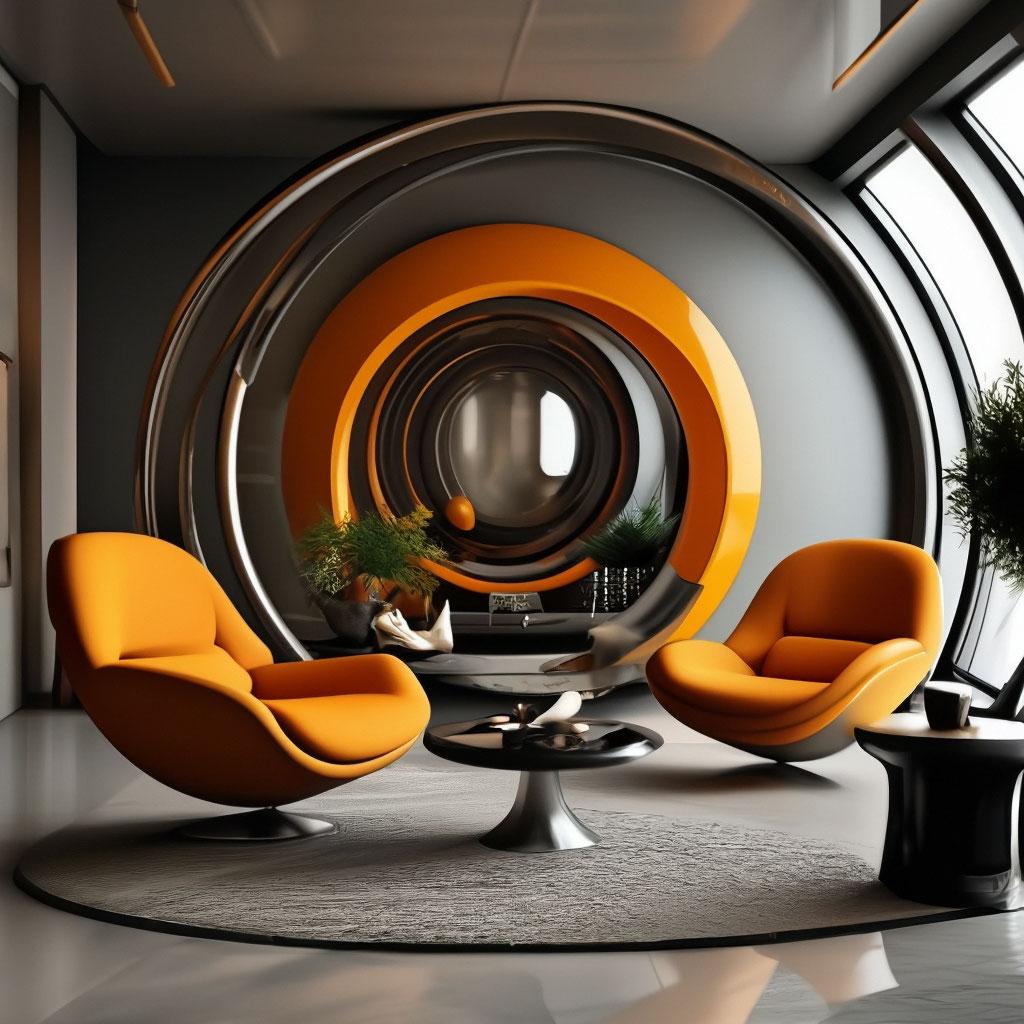
Retrofuturism actively uses the symbolism of space: lamps in the shape of planets, posters with images of space travel, wallpaper with abstract geometric patterns reminiscent of star maps or pulsars. In such an interior you can often find furniture inspired by the design of iconic works of science fiction, such as Stanley Kubrick's "A Space Odyssey". This style emphasizes the aesthetics of mankind's early dreams of the future and the cosmos, creating an atmosphere of scientific fantasy in modern homes.
Retrofuturism is ideal for those who want to combine the past and the future, bringing a touch of fantasy and play to the interior. This style gives a sense of adventure and retro romance.
7. Cyberpunk
Cyberpunk, which used to be a style more associated with science fiction, has gradually migrated to residential interiors, attracting those looking for bright and futuristic solutions. Cyberpunk's popularity as an interior design trend peaked in the 2020s. This is largely due to the growing interest in technology, virtual reality and computer culture. Modern urban trends intertwined with digital evolution have influenced the formation of this visually and technically rich style.

The main characteristics of Cyberpunk are cold, technological elements, metals, glass, neon accents and an abundance of electronics. Cyberpunk interiors are dominated by monochrome colors: shades of black, gray, metallic with splashes of bright neon - blue, pink, purple. Neon inserts can be realized in the form of illumination of furniture, walls or accessories, creating the atmosphere of a futuristic metropolis.
Cyberpunk spaces often resemble scenes from science fiction movies. Furniture and decorative elements are inspired by industrial design - it can be furniture with metal frames, steel surfaces, high-tech lighting fixtures. For example, tables and armchairs made of glass and metal combined with "racing seat" style armchairs emphasize the techno character of the style.
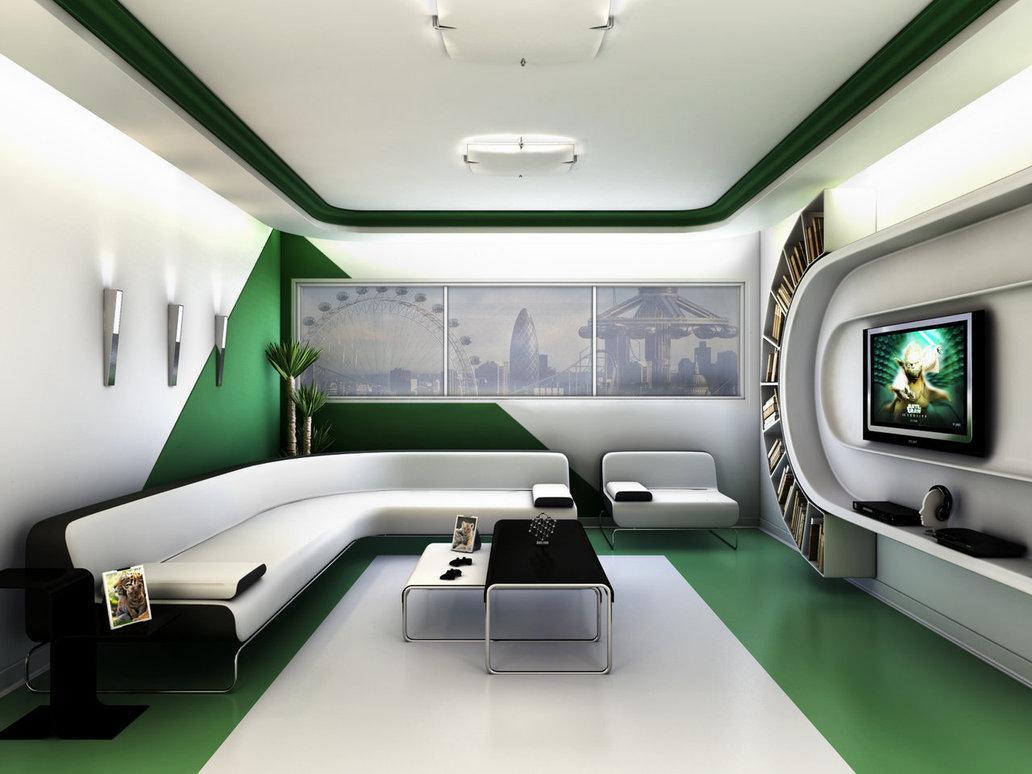
High technology plays an important role in cyberpunk interiors. "Smart homes, automatic lighting systems, interactive control panels, virtual assistants - all this becomes an integral part of the space. These elements are not only functional, but also visually correspond to the spirit of cyberpunk. An important detail can be a media center with many screens or computer monitors that fit organically into the overall entourage of the room.
Walls in the cyberpunk style can be smooth or minimalist, with industrial concrete surfaces and neon graffiti or drawings reminiscent of scenes from the future. Metal structures or even decorative elements imitating parts of cybernetic devices are often used. For example, you can find wall panels stylized as electronic circuits or pipes running along the walls, creating the feeling of a factory space.
Cyberpunk is a style for those who want to create a home of the future here and now. It is the choice of people who are inspired by technology, urbanity and high-tech innovation. In such an interior, every element is reminiscent of possibilities that are near or about to become a reality.
8. Eco-minimalism
Eco-minimalism is one of the youngest and actively developing styles, which appeared at the intersection of minimalism and ecological design. In the last 5 years, this style has become especially popular, as modern consumers have begun to appreciate not only the aesthetics of interiors, but also their impact on the environment. Eco-minimalism is a perfect combination of clean lines, functionality and eco-friendliness, making it relevant in an era of global concern for nature.
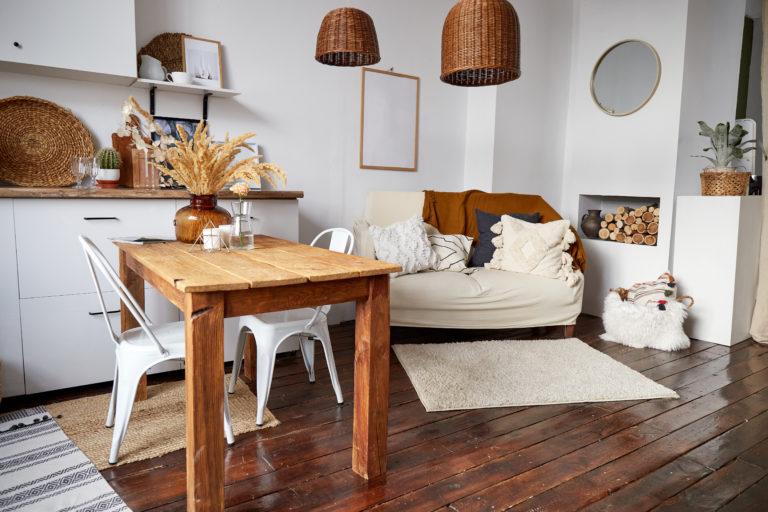
The basic principles of this style are minimalism, but with an emphasis on eco-friendly materials and natural elements. There is no room for excess, but special attention is paid to the quality of materials and their origin. Eco-minimalist interiors use materials such as bamboo, FSC-certified wood, recycled glass and metal, and textiles made from organic cotton or linen. It is not just an aesthetic, but an entire philosophy of life that focuses on minimizing harm to the environment.
The color palette in eco-minimalism adheres to soft and natural tones. Mostly neutral colors are used: sand, beige, light gray, white and green, reminiscent of natural landscapes. Decorative elements may include live plants, rough stone and water - anything that helps create a natural and harmonious atmosphere in the house. Furniture is usually made in a minimalist style, with straight lines and maximally functional solutions, but still made of environmentally friendly materials.
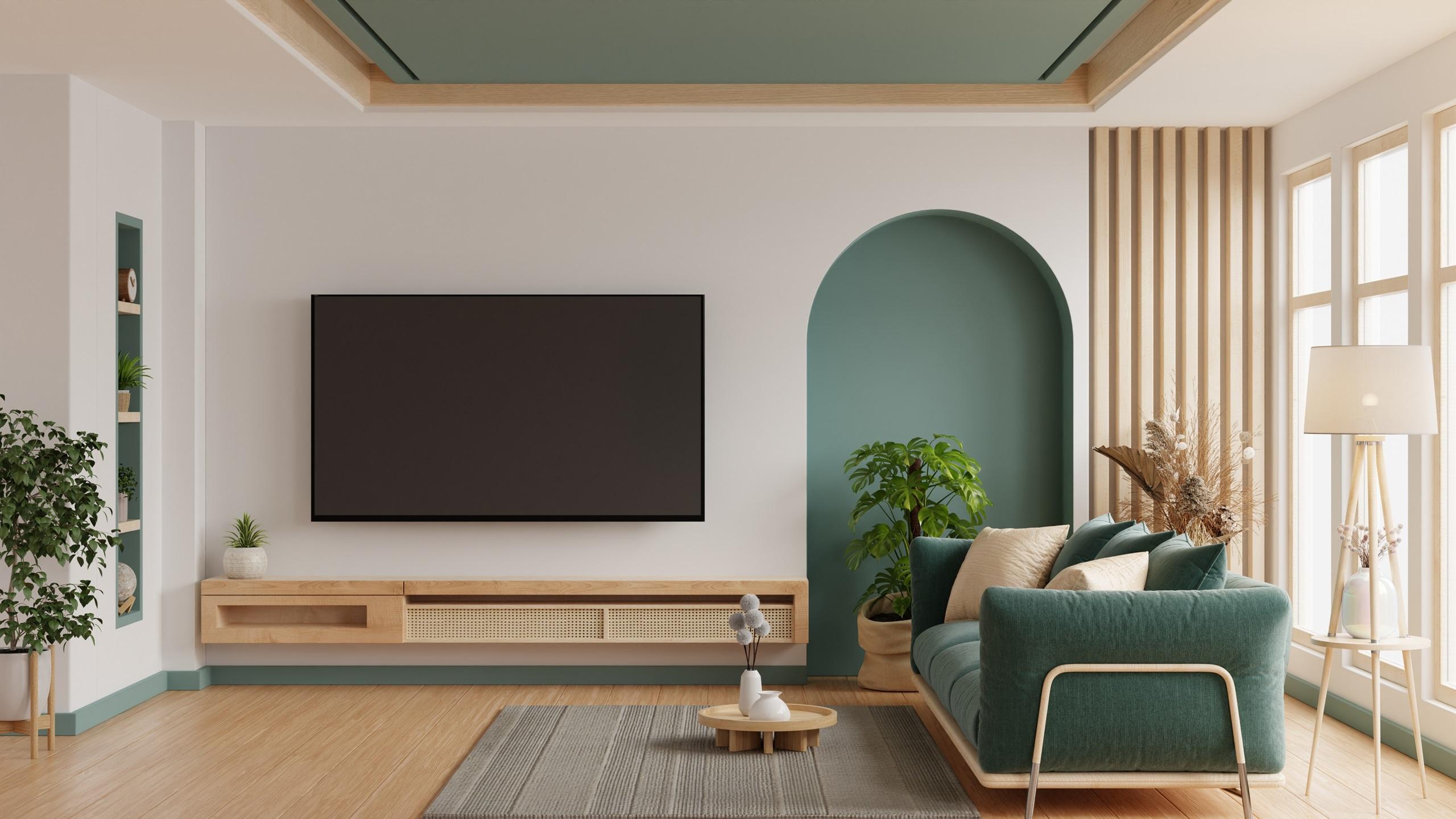
Eco-minimalism is not only aesthetics, but also a conscious approach to life. Spaces in this style are built around the idea of reducing consumption, rejecting unnecessary items and creating an environment that is beneficial to both man and nature. Energy-saving elements play an important role: solar panels, "smart" heating and cooling systems, use of natural light.
Eco-minimalism has become popular thanks to the movement for sustainable development, which is gradually penetrating all aspects of our lives. People strive to create harmonious and safe spaces for themselves and their loved ones, and this style reflects this need in the best possible way. Eco-minimalist interiors can be found in private homes as well as in offices, where more and more companies are concerned about the ecological footprint they leave behind.
The new interior styles that have emerged in the last 5-10 years reflect modern society's desire for experimentation and self-expression, as well as the search for a balance between aesthetics and functionality. This can also be seen in architecture: in Cyprus, for example, several beautiful complexes are being built that elegantly blend into the environment and at the same time take care of it.
Any of the above styles can be applied to the design of your apartment or house in Cyprus. The best part is that you don't need to hire a designer for most of what is described: much can be done in-house! However, if you have rooms with complex shapes or large spaces, it is better to contact a professional.
Read also:

